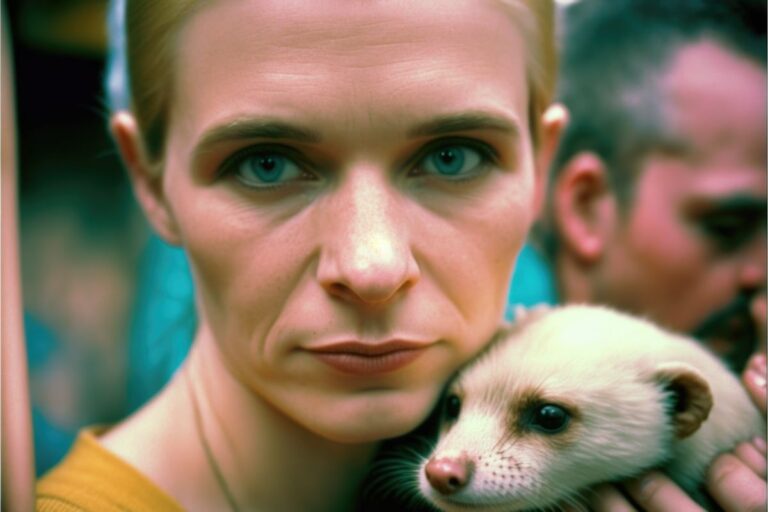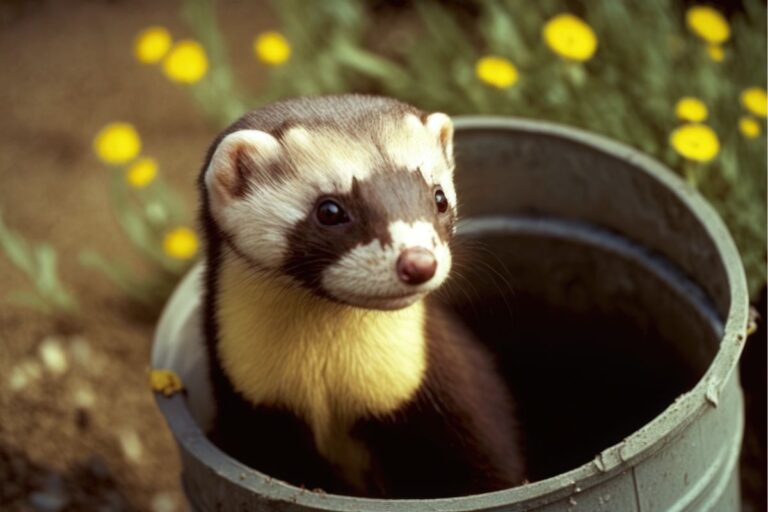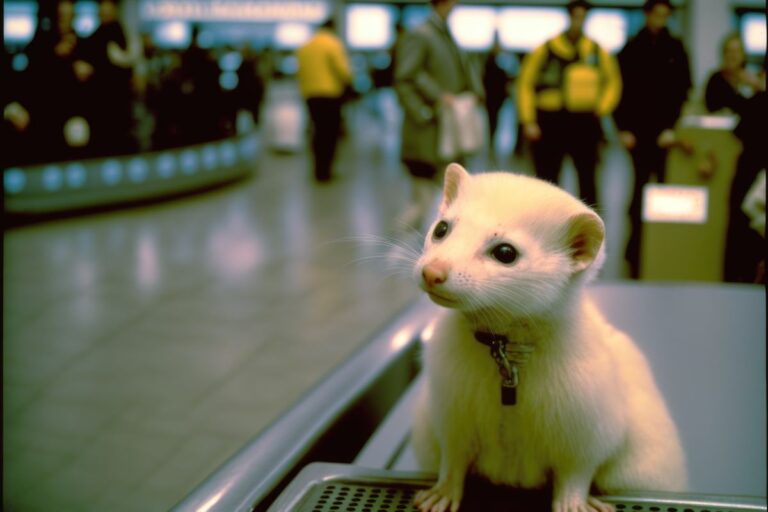How many litters can a ferret have in a year?

Breeding ferrets is not an everyday topic. It is a complex task that requires an expert opinion. However, ferret breeders are experienced enough for the process.
So, How many litters can a ferret have in a year? A healthy ferret will go into the season when she is 5-8 months. A ferret can have 1-2 litters in a year and as many as 5 with a few adjustments to their living conditions.
In this article, I will try to answer as many questions as I can surrounding ferret reproduction and litter care.
Note that once a female ferret, often referred to as a jill, goes in season, she stays that way until she is bred. It is the reason I advise ferret owners to ensure that their pets are spayed before she reaches her reproduction maturity.
Ferret breeding
As I have mentioned above, breeding ferrets should be done by someone with experience. Well, it is because this is crucial and at the same time delicate process from mating to after birth care.
Now, Jills will reach their sexual maturity at 5-8 months. A hob, male ferret, will mature at 6-8 months. Mating of ferrets happens in Spring. I mean, the weather is perfect, and daylight is longer, and thus facilitating the production of sexual hormones.
How can you tell that your jill is in the heat?
Well, as I have indicated above, jills will go in heat at 5-8 months. Now, there is no specific timing for her to go in heat. You will need to observe for signs that your ferret is ready to breed. For instance, you may notice a pungent smell in her room.
She might also have an enlarged vulva. It could appear swollen and she will have pink-ish secretion from her vagina. If this sounds like your ferret, she is in heat and needs to mate as soon as possible.
Before I go on, I must mention that you must not ignore these signs. If your ferret goes for longer without mating, she could develop an infection from estrogen toxicity.
Now, if a male ferret is ready for mating, you will notice that he does not care about hygiene anymore. In fact, even a litter trained hob will urinate on his beddings to mark territories. Also, they will have larger and seemingly swollen testicles.
The mating process
Now, if your jill and hob seem to be ready, then you should bring them together. Ensure that you have plenty of time to keep watch. This is not exactly a pleasant experience, at least not the one to watch. However, you should be at home to ensure that this process goes well.
The male will be aggressive towards the jill, who might scream in the process. The hob will bite the jill on the neck in preparation for mating. This is known to induce ovulation and thus facilitate conception. He might even drag her around and she will helplessly let him. ‘
Now, the mating process could go on for hours, and sometimes days! However, you should not separate them until the mating is over. It could harm the couple if you try to disengage them. The hob’s penis locks with the female until mating is over.
Separate the ferrets once the mating process is over. Within two weeks you can be able to tell whether it was a successful process or not. She will start gaining weight and you might notice increased food consumption.
Ferret gestation period
If the mating process was a success, your jill will continue to gain weight as the pregnancy advances. She will carry the pregnancy for 42 days which equals six weeks only. After the gestation period, your jill will go into labor.
Well, during this period, ensure that your ferret is well fed. Two weeks before she gives birth, your ferret might start shedding her hair. She is preparing for nesting since her body is aware she will have her litter soon.
You should move her to a quiet, clean, and spacious room. Ensure she has beddings, food, and water. Within the two weeks, your ferret will have already gotten used to living in the new environment you place her in.
When she goes into labor, it is time to leave her alone. They need privacy and most of all silence. If a delivering ferret feels bothered or scared. She could end up eating her kits or killing them. Well, ensure that no one else but you have to access to her room.
Provide food and water. Also, you may keep watch from afar to make sure that she delivers successfully. Toxaemia, a pregnancy complication is not unheard of. You would need to call your vet, which is why you need to keep watch.
Your jill will deliver her litter a few hours later. Labour persisting for over 24 hours should have you consulting your vet.
A ferret can have as many litters as 5 and as few as 1 in a year. However, under natural circumstances, a ferret will have 1-2 litters in a year.
After birth ferret care
Once your ferret receives her litter, you must care for her. You need to feed her even more food now that she is nursing her kits. Note that one litter could have as many kits as 15. However, the average number of kits is usually 4-8 and at the same time, your ferret could have just one kit!
Now, you must leave her alone for some time. She needs to get conversant with her new litter. She can be a little protective so you should keep away from handling the kits. Only feed and check on them until your ferret loosens up.
As the babies grow, your ferret can let you handle them. Wait until she is comfortable with having you around her kits. Continue feeding her even though she will lose some weight due to nursing.
The kits will continue nursing from their mother until 3 weeks when they have teeth to chew soft food. However, they will still need to be nursed. At 6 weeks, the kits now have stronger teeth and can be weaned. You may introduce kibble dry ferret food at this stage.
However, kits will remain with their mother until they are ready for separation, which could be in about 12 weeks. You will need to follow up with your vet for a check-up and vaccination.






